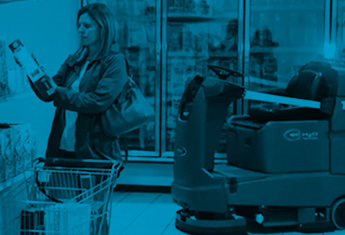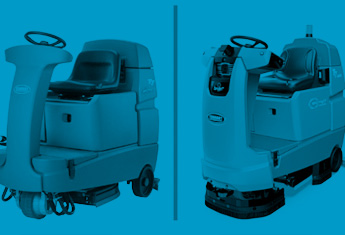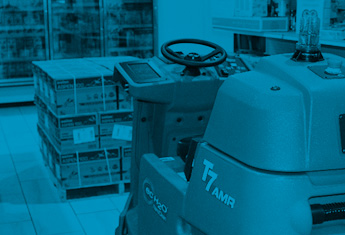Your shopping cart is empty.
Facility Cleaning Trends for 2022
Posted in Cleaning Solutions, Staffing & Personnel, Best Practices,

Over the last two years, facility cleaning has received more attention than ever before and faced unprecedented challenges. While the central theme of 2020 and 2021 was adapting to the unexpected, there are signs that 2022 may begin to finally level out into a true “new normal.”
But even as surprises return to an exception rather than the rule, the pace of change in the facility cleaning industry keeps accelerating. Here’s a look at the key trends that will shape facility cleaning in 2022:
Higher Standards Remain
Public confidence around the health and safety of public spaces is an elusive quality to gauge. But one thing is for sure: Expectations around cleanliness permanently changed over the last two years. General awareness of public health risks and the importance of cleaning and disinfection aren’t going to fade anytime soon — no matter what happens with COVID-19. Heightened cleaning protocols will continue as organizations strive to meet the public’s higher standard of cleanliness.
Top Cleaning Goal: Inspiring Confidence
The biggest challenge and goal for cleaning teams in 2022 will be inspiring confidence among employees, customers, students, guests, etc. Organizations of all types are trying to draw people back into their facilities. At the same time, experts expect COVID-19 variants to continue surging in different regions. As a result, businesses will be looking to their cleaning programs to deliver the confidence reassurance that will overcome heightened sensitivities and bring people back in.
Staffing is the Most Significant Barrier to Success
Unprecedented labor shortages and other acute labor pressures are squeezing nearly every industry — but they’re hitting the cleaning industry particularly hard. Among other challenges, heightened health and safety sensitivities are leading workers to look to jobs they consider lower-risk. As a result, organizations will need to continue developing strategies to attract and retain labor — focusing on demonstrating how they’re protecting employee safety and highlighting professional development paths and opportunities.
Automation Becomes Practical
Some of the biggest names began embracing automated cleaning machines years ago, but the adoption of robotic cleaning machines has accelerated significantly over the last two years. One factor is the intense labor pressure already mentioned. The other reason is that new automated cleaning equipment is more practical, cost-effective, and easy to implement than ever — making it an accessible and valuable solution for more and more organizations. Automated cleaning machines are solving cleaning teams’ labor challenges while enabling them to maintain or even elevate their standards of cleanliness. Critically, automated cleaning machines will not replace human employees but instead take on routine tasks like floor cleaning, enabling cleaning teams to re-allocate employees to other, more complex tasks.
Value-Based Cleaning Reshapes Cleaning Programs
Cleaning teams aren’t just cleaning for appearance anymore. Driven by consumer and employee demands, organizations are supporting their brand values by defining the “why” behind their enhanced cleaning programs. This value-based cleaning focuses on outcomes like employee wellness, guest safety, and responsible corporate citizenship. Focusing on the “why” will reshape the “how” of cleaning, as well — from frequency and rigor of cleaning, to shifting from “cleaning theater” to high-impact cleaning, to using products that are safer for employees and facility users.
Sustainability Makes Business Sense
The biggest of the value-based “whys” reshaping cleaning is sustainability. Consumers and employees increasingly demand sustainable practices throughout an organization. More and more cleaning programs will move toward eco-friendly products and protocols that reduce water and energy usage. Perhaps most importantly, sustainable cleaning will move beyond the realm of value-based cleaning as businesses recognize the operational value in sustainable cleaning practices. More and more organizations will define the business case for sustainable cleaning, adding up the savings from reducing chemical, water, and energy usage to boost bottom lines and protect margins.
Data and Analytics Drive Competitive Advantage
Despite all the change, cleaning continues to be viewed (often quite proudly) as an old-school industry, driven by hands-on hard work. In the face of rising challenges, evolving pressures, and intensifying competition, more and more cleaning teams will look to new-school data and analytics tools to gain an edge. Organizations will leverage analytics tools to give cleaning teams a way to monitor cleaning performance objectively and uncover both quick-win and long-term opportunities to drive operational efficiencies that make all the difference in a tight-margin industry.
What are your goals & challenges for 2022?
Despite all the change, cleaning continues to be viewed (often quite proudly) as an old-school industry, driven by hands-on hard work. In the face of rising challenges, evolving pressures, and intensifying competition, more and more cleaning teams will look to new-school data and analytics tools to gain an edge. Organizations will leverage analytics tools to give cleaning teams a way to monitor cleaning performance objectively and uncover both quick-win and long-term opportunities to drive operational efficiencies that make all the difference in a tight-margin industry.

RELATED LINKS
Ready to take your cleaning to the next level?
Whether you are requesting a product demonstration or a quote, ordering parts, or making a service appointment, you've come to the right place. Tennant professional representatives are ready with answers to your questions, and we look forward to showing you how much we appreciate your business.
*Required Fields




